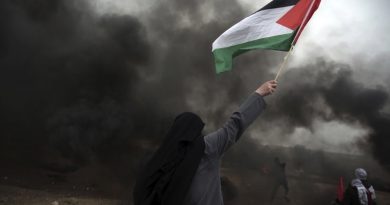Serbia Unrest: Protests Grow as PM Resigns, Elections Loom
Benjamin Barry
Staff Writer
On November 1, 2024, a recently reconstructed train station collapsed in Novi Sad, Serbia’s second-biggest city. The collapse killed 15 students, including two children. Since the incident, protests have spread across the country, with The Guardian reporting that protests occurred in over 200 towns and cities within the small Balkan country.
While the protesters’ demands have been varied, many are asking for accountability and transparency regarding the incident late last year. Some have called for a reconfiguration of the Serbian government, while others call for reforms to the current system. In December, the leading party of Serbia, the Serbian Progressive Party (SNS), had around 48.3 percent of the country’s support, according to Reuters. Since then, with the increase in protests, public approval of the government has severely fallen.
On January 28, the president of Serbia, Aleksandar Vučić, said that within 10 days, he would decide on forming a new government and potentially holding parliamentary elections, as reported by . Since then, Prime Minister Miloš Vučević has announced his intention to resign. Parliament has 30 days from his announcement to confirm the resignation and decide whether to appoint a new prime minister or hold an election. Vučević was not the only one to resign; former construction minister, Goran Vesić, also resigned after the collapse of the canopy. Additionally, the mayor of Novi Sad, Milan Đurić, resigned. 13 people have been charged in connection with the tragedy, including several government and state officials.
Many of those who resigned have publicly cited the protests as the reason. According to The Associated Press, the prime minister resigned due to a group of SNS supporters attacking a female student at a protest in Novi Sad. Almost all of the violence brought out by the protests has not been enacted by the protesters themselves, but rather by those in strong support of the current government.
In an interview with Matija Perun, who was born and lives just outside of Belgrade, when asked about the students protesting, he said, “These students are really smart, really well-mannered and well-educated.” Other attacks have also occurred as a result, including several individuals ramming their cars into protesters. This has caused an uprising of more support for the students, with many going on strike in solidarity.
As reported by The Guardian, the National Bar Association of Serbia announced a month-long strike in solidarity. Additionally, The Associated Press reports in another article that a group of farmers drove their tractors to Novi Sad to protect the protesters during a blockade of the busiest bridge in Novi Sad. Mr. Perun said, “This is beyond anybody’s expectations… there’s a lot of hope.” As a part of the protests, students walked all the way from Belgrade, the capital, to Novi Sad in preparation for a 24-hour blockade of the busiest bridge in the city, according to The Associated Press. Along the way, they were greeted with open arms, with many providing warm food and drinks. Victoria Page, who has taken part in one of the protests, says that it was an incredibly emotional moment, “There’s so many videos of just like random people weeping and giving them food.”
Looking forward, the main goal of the protesters is for all the details regarding the reconstruction of the train station to be released. The station was renovated twice as part of a deal with Chinese state companies. Many blame corruption and the cutting of corners, with The Associated Press stating that “corruption, poor oversight, and substandard construction caused the tragedy” in the Balkan state. Mr. Perun emphasized this, pointing it out and saying, “You need a connection to anything real.”
As for how the protests have been covered by the media, it has been incredibly varied. In Serbia, much of the media is state-owned and has largely avoided covering the protests. In fact, according to the Associated Press, one state news agency broadcasted fake photos of empty streets in Novi Sad. Diverging from the rest of the group, one state-owned news station, Ration Television of Serbia (RTS), aired footage of the massive crowds in Novi Sad protesting, as reported by The Guardian. Quickly following, the SNS party denounced RTS, calling the airing of the protests “scandalous coverage.”
Image courtesy of Getty Images.


